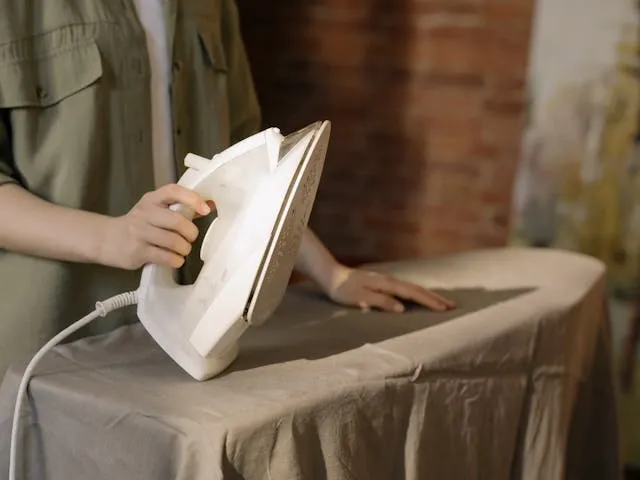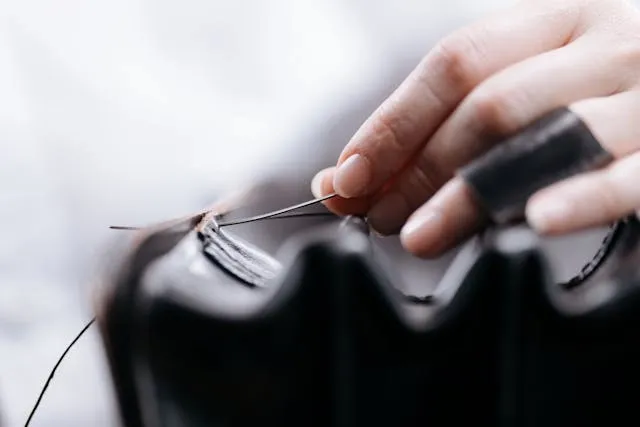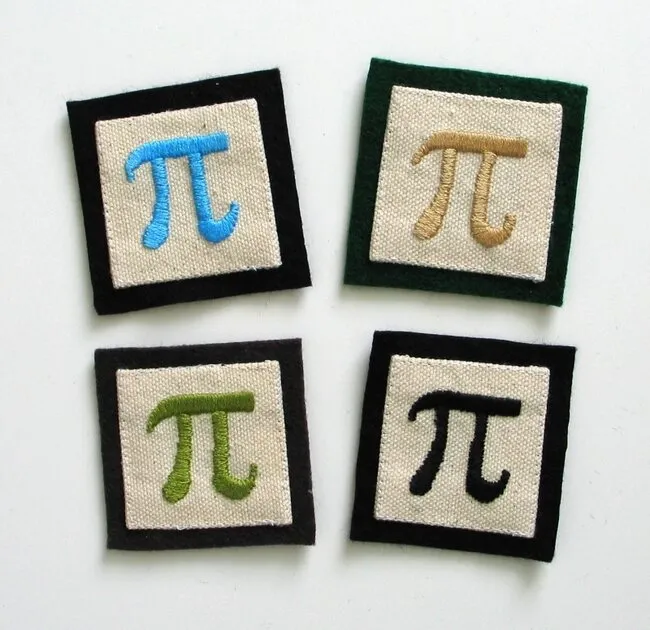Iron-On Vs Sew-On Patch: Comparing Key Differences, Durability & Cost
Choosing between iron-on vs sew-on patches can be challenging. In this post, we explore key differences between these two popular options, focusing on durability, ease of application, and cost. Are iron-on or sew-on patches better for personalizing clothing or repairing worn-out items?
Understand the advantages and disadvantages of both to help you make an informed decision.

Key Takeaways
- Iron-on patches use heat-activated adhesive for application, while sew-on patches require stitching with a needle and thread.
- Sew-on patches are generally more durable, capable of withstanding frequent washing and high-stress use more effectively than iron-on patches.
- It is easier and quicker to apply iron-on patches, as you only need an iron and no sewing skills are required.
- Both patches generally have similar costs. The main variables that affect price are patch material and production method, size, and quantity ordered.
- We supply high-quality custom patches in a range of styles and various backing types, and you can order in bulk to access generous wholesale discounts.
Table of contents
-
Difference Between Iron-On And Sew-On Patches
-
Iron-On Vs Sew-On Patch: How Do Iron-On Patches Stand Out?
-
Iron-On Vs Sew-On Patches: Difference In How They Attach To Fabrics
-
Which One Is More Durable? Iron-On Or Sew-On Patch
-
Best Fabrics For Iron-On And Sew-On Patches In 2025
-
Can You Wash Iron-On Patches Without Damage?
-
Can You Wash Sew-On Patches Frequently?
-
Are Sew-On Patches More Expensive? Cost Difference
-
Exploring Less Expensive Alternatives With Adhesive Patches
Difference Between Iron-On And Sew-On Patches
There are distinct advantages and disadvantages to both iron-on and sew-on patches. Let’s take a look at them to help you determine their suitability for different applications.
Iron-on patches are easy to apply with no sewing skills. They bond to fabric with a heat-activated adhesive, so you only need an iron to quickly customize your gear. The downside is that they are less durable than sew-on patches, particularly when exposed to frequent washing or high heat. They are a great option for items that aren’t exposed to a lot of wear and tear, like hats or decorative clothing.
Sew-on patches, meanwhile, are considered a more permanent solution. You must stitch them onto fabric to hold them in place even through frequent washing and high-stress use. They take more time and sewing skills to apply, but their versatility and durability is outstanding. Sew-on patches work well for heavy-use items like jackets, jeans, and bags.

Why Choose A Sew-On Patch Over An Iron-On Patch?
You may experience several advantages if you choose a sew-on patch over an iron-on patch. Sew-on patches are stitched directly onto the fabric, so they remain in place no matter how many times you wash them. This makes them ideal for heavy-use items like jackets, jeans, and bags.
Unlike iron-on patches, sew-on ones don’t rely on a heat-activated adhesive that weakens over time. Also, if you learn how to sew patches on, you have a more versatile solution that can be applied to a wider range of fabrics. Some fabrics would be damaged by the high heat needed to attach iron-on patches.
Overall, sew-on patches provide a durable and resilient option for customizing or repairing garments. The only downside is that you need to have some basic sewing skills and the application takes longer.
Iron-On Vs Sew-On Patch: How Do Iron-On Patches Stand Out?
Iron-on patches excel when it comes to convenience and ease of application. They require little to no skill to attach, as you don’t have to sew them - all you need is a household iron to apply. This makes them quick for repairs or customizations. They work by activating an adhesive when you apply pressure with a hot iron, forming a strong bond with the fabric. The attachments are durable on heat-resistant materials like cotton or denim.
We supply custom iron-on patches with outstanding versatility in design options. You can incorporate intricate details and vibrant colors on a number of patch types and materials. With the user-friendly application process, they are highly accessible for people who lack sewing skills or equipment. If you want to, you can even add some stitches around the outside to get the best of both worlds.
Trying to choose the perfect patch for branding?
Our custom brand logo iron-on patches are a simple solution to add branded embellishments to uniforms. There are also sew-on options if you would prefer a more permanent attachment.
Iron-On Vs Sew-On Patches: Difference In How They Attach To Fabrics
The primary difference between iron-on vs sew-on patches is the method by which they attach to fabrics:
- Iron-on patches: These use a heat-activated adhesive to bond with the fabric.
- Sew-on patches: These use a needle and thread to attach to your gear.
To apply an iron-on patch, you need to put it in position, cover with a pressing cloth, and apply pressure with a hot iron for the recommended time. The heat melts the adhesive, which then bonds with the fabric before cooling and solidifying once again. This is a quick method that requires minimal skills and tools.
Traditional sew-on patches must be stitched around the edges of the patch. This creates a very secure bond that is generally considered more permanent. It also allows you to affix patches to materials that won’t tolerate high heat, like synthetic or delicate fabrics. It is more time-consuming and requires more skill, but sew-on patches offer superior flexibility and can be easily removed without damaging the garment.
Which One Is More Durable? Iron-On Or Sew-On Patch
When comparing the durability of iron-on vs sew-on patches, it is the latter that typically offers greater longevity. Sew-on patches are securely stitched to your garments, making them very resistant to peeling or detachment, no matter what you put them through. Sew-on patches remain in place on various fabric types, including those that don’t bond well with adhesives.
If you want to put on patches without sewing, iron-on patches are probably your best option. They can be durable, depending on the adhesive quality, and they are convenient and easy to apply. However, with exposure to heat and frequent washing, the bond can be weakened and the patch starts to peel. Reinforcing them can enhance their durability, but sew-on patches are always likely to be a more robust choice.

Extending The Life Of Your Patches
There are similar steps you can take to extend the lifespan of both iron-on and sew-on patches:
- Proper application: Apply iron-on patches correctly ny using the appropriate heat setting and pressure. Strengthen sew-on attachment with tight, precise stitching.
- Reinforcement: Iron-on patches can be reinforced with stitching around the edges. Sew-on patches can be strengthened by applying fabric adhesive before sewing in place.
- Gentle washing: It is wise to turn garments inside out before washing and use a gentle cycle with cool water and mild detergent. This can help with the durability of both patch types.
- Spot cleaning: Spot clean both patch types when possible to reduce the frequency of full washes.
- Storage: Store your patched garments in a cool, dry place to prevent moisture exposure.
We supply high-quality, durable patches in iron-on and sew-on formats, with various other options available to help you find the ideal solution.
Create custom embroidered patches with your preferred attachment method
Our high-quality custom embroidered patches are vibrant, textured, and durable. You can order with iron-on, sew-on, or any other backing you want for the best results.
Create yoursBest Fabrics For Iron-On And Sew-On Patches In 2025
As fabric technologies evolve, knowing which textiles work best with each patch type can improve results and durability. Cotton and denim remain ideal materials for both iron-on and sew-on patches as they have high heat resistance and are easy to stitch.
Modern blends, such as polyester-spandex, require more careful handling. Iron-on adhesives may not bond well due to heat sensitivity, so sew-on attachments are generally the preferred choice. Additionally, performance fabrics often used in activewear demand sew-on application, as their coatings resist adhesives and can degrade under high heat.
When customizing hybrid materials or delicate synthetics, always test patch application on a fabric scrap first, and consider reinforcing with stitching regardless of patch type for long-lasting adhesion.
Can You Wash Iron-On Patches Without Damage?
With iron-on patches, there is generally a higher risk that their adhesion will weaken in the wash. However, it is possible to wash iron-on patches without damaging them with a few key precautions. Here are the steps to take:
- Turn the garment inside out to protect the patches during the wash.
- Use a gentle cycle on your washing machine with cold water.
- Choose a mild detergent and avoid harsh chemicals or fabric softeners.
- Opt for air drying instead of using a tumble dryer.
Heat can weaken the adhesive bond, so hot water, tumble dryers, and excessive ironing should all be avoided.
By taking these safety measures, you can protect your iron-on patches against damage when washing. This will preserve their adhesion and help maintain their vibrant appearance, even through multiple wash cycles. Our high-quality custom designer iron-on patches are designed to endure regular washing, as long as you take proper care.
Care Tips For Longevity In 2025 And Beyond
With frequent use of home laundry innovations like steam cleaning and ultrasonic washers, patch care has changed subtly. Avoid steam cycles when washing patched garments - steam can weaken iron-on adhesives faster.
Ultrasonic washers are gentle on fabric, but they may cause micro-movements that loosen stitching if sew-on patches are not attached firmly. For maximum longevity, continue to use cold, gentle cycles and air dry carefully. New specialty detergents formulated for delicate or technical fabrics can also help maintain patch vibrancy and fabric integrity with no compromise on adhesion.
Finally, when ironing patched garments, always use a pressing cloth and avoid direct heat on the patch surface. This preserves both iron-on adhesives and embroidered threads.
Looking for the best custom patches for a sports team?
Both iron-on and sew-on backings can work well for our custom sports patches. Design a unique patch for your members to wear with pride.
Can You Wash Sew-On Patches Frequently?
You can wash sew-on patches without damaging them, but there are still some essential care tips to follow. In considering iron-on vs sew-on patches, the latter are generally more durable because they are stitched directly onto the fabric. Here’s how to wash garments with sewn patches:
- Turn the garment inside out to minimize abrasion.
- Use a gentle cycle with cold water and a mild detergent to protect the fabric.
- Avoid using fabric softener.
- Air dry to help maintain the patch integrity.
These tips are similar to those for iron-on patches, but it isn’t to preserve the attachment in this case. Rather, it is to keep the patch in optimal condition for as long as possible. Adhering to these washing guidelines will ensure your sew-on patches stay vibrant through numerous wash cycles.
Are Sew-On Patches More Expensive? Cost Difference
Generally speaking, there isn’t any cost difference between choosing sew-on or iron-on patches. When you use our service, the main variables that affect price are the type of patch your order and the size. For example, 3” custom embroidered patches cost $4.92 each when you order a batch of 20 whether you order the plain backing for sewing or the iron-on backing. But a batch of 20 3” 3D embroidered patches costs $7.19 per patch.
With our bulk ordering, you can save money by placing an order for a larger quantity of patches. Whether you prefer an iron-on or sew-on backing, or any other attachment method, our prices are competitive and wholesale ordering unlocks even greater savings. Consider what will work best for your patch design and how many patches you actually need to find the optimal solution.
What Are The Hidden Costs Of Creating Quality Patches?
Creating high-quality patches involves a number of costs beyond the obvious expenses of materials and labor, and we factor these into our pricing. The extra costs include:
- Prototyping: If you need to see prototypes to ensure the design and quality meets the necessary standards, this incurs an additional cost.
- Quality control: Rigorous checks throughout the manufacturing process ensure every patch meets the necessary standards, and this takes skilled personnel.
- Equipment maintenance: Regular maintenance of the specialized machinery used to produce patches ensures minimal downtime and consistent output.
- Overheads: There are often indirect costs like utilities, renting production facilities, and administrative expenses.
- Shipping and handling: Proper packaging and shipping ensure your patches arrive in pristine condition.
All of these factors play a role in the overall cost of producing high-quality patches. The amount charged for custom patch creation accommodates all aspects of the production process, and we work hard to keep our prices as low as possible.
Create patches for military, law enforcement, or Airsoft
Our custom tactical patches can be created for official use or casual applications, with robust materials and durable sew-on and iron-on attachments, as per your preference.
Explore your optionsExploring Less Expensive Alternatives With Adhesive Patches
If you want to explore alternatives to iron-on or sew-on patches, adhesive patches are a good option. Also known as stick-on or peel-and-stick patches, the adhesive option offers a quick and simple method of personalizing garments without sewing or ironing. They are ideal for temporary use, events, or scenarios where speed and convenience are required.
Our patch backings don’t really make a difference to price, so adhesive patches won’t really save you any money. But you need to think about their durability compared to the other patch types we have discussed in this post. If you need a long-term solution, you may want to bolster the longevity of adhesive patches by learning how to glue patches to fabric using clothing adhesive.
Adhesive patches may not be the best solution for heavy-duty or long-term applications, but they are a simple and versatile option for light use. With our range of high-quality adhesive patches, you will never compromise on style or functionality, so they are excellent for quick fixes or temporary customization.

What Distinguishes Adhesive Patches From Iron-On And Sew-On Ones?
There are distinct characteristics associated with adhesive, iron-on, and sew-on patches that make them each suitable for different applications.
- Adhesive patches: Quick and convenient, there require no heat or sewing. Simply peel off the backing and press them onto the fabric for temporary applications, but be aware that their longevity is limited.
- Iron-on patches: With heat-activated adhesive, these provide a stronger, more durable attachment ideal for medium-term use. They require a hot iron and careful application for an optimal adhesion.
- Sew-on patches: These offer the highest durability. You must stitch them directly onto the fabric for a solution suitable for heavy-duty, long-term use. When done correctly, this method achieves a secure bond even with frequent wear and washing.
Frequently Asked Questions About Iron-On Vs Sew-On Patch
Difference Between Iron-On And Sew-On Patches
The primary difference is the way you attach them to fabric. Iron-on patches adhere through the application of heat to activate the glue, while sew-on patches are stitched directly onto the fabric.
Are Sew-On Patches More Expensive?
The main variables that affect price are the patch type and size, and the quantity ordered. When you design with us, the patch backing makes no difference to the overall price.